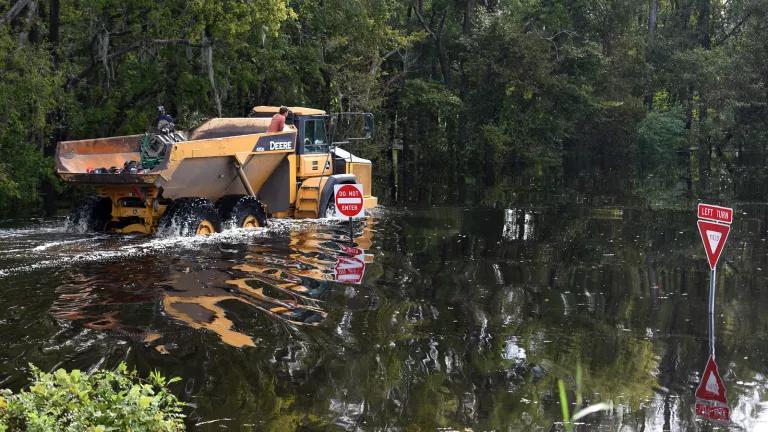Despite the freezing temperatures in Chicago, my thoughts are turning to my garden, with dreams of bountiful harvests (and my much-anticipated pergola). Gardeners intrinsically understand the economic concept of opportunity cost – if we don’t get tomato seeds or seedlings in the ground at the right time, we won’t have Black Krims gracing our August picnics. The cost of inaction is clear.
Opportunity cost can be calculated for almost any situation. One year ago yesterday, NRDC and our advocacy partners submitted comments on a draft consent decree between the Metropolitan Water Reclamation District of Greater Chicago (MWRD) and the U.S. Environmental Protection Agency (EPA) and the Department of Justice that would require MWRD to eliminate sewage overflows into the Chicago River. The fact that 366 days have gone by isn’t nearly as important as the opportunity cost that this delay means for residents in the MWRD service area, especially when you consider that MWRD’s plan to control overflows began in 1972 and, if they maintain their current schedule, won’t be complete until 2029, at the earliest.
The opportunity cost of these lost years is all too real for area residents. Years of dithering means that they will be less protected from spring rains and the basement flooding that too often accompanies them, let alone for the longer term climate changes that could worsen flooding in the region. It means that recreational users of the Chicago River, as well as the fish and other wildlife living in it, will be less protected from combined sewer overflows. It means that our region will continue to rely on an outmoded infrastructure system for handling our wastewater, literally flushing scarce infrastructure dollars down the toilet (and, as a recent analysis from the American Society of Civil Engineers showed, dollars that are critically needed).
One part of the solution is green infrastructure, the use of natural and built systems such as wetlands, green roofs, rain gardens, bioswales, street trees and porous pavement that infiltrate or otherwise capture rain before it enters the sewer system. Scores of cities, including Seattle, Philadelphia, and New York, are using green infrastructure to better manage stormwater and provide an array of other benefits. That’s why EPA and/or state agencies are requiring the use of green infrastructure in many of these cities…except Chicago. The green infrastructure requirement in the draft consent decree was miniscule compared to what other cities are doing.
But MWRD doesn’t have to wait for the consent decree to be finalized to make a serious investment in green infrastructure. Just 90 miles north of Chicago, the Milwaukee Metropolitan Sewerage District has become one of the national leaders on green infrastructure deployment, not because they’ve been ordered to do so, but because they believe it’s the most effective way to manage stormwater.
Clearly MMSD’s leadership understands the opportunity cost of doing nothing in a way our region’s leaders do not.




